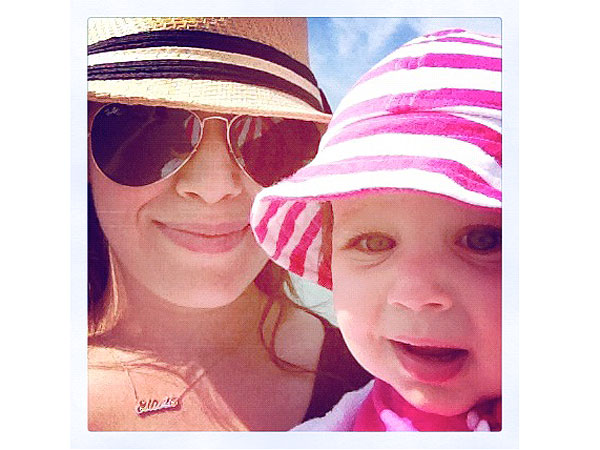MILWAUKEE (AP) — Nearly as many Americans die from guns as from car crashes each year. We know plenty about the second problem and far less about the first. A scarcity of research on how to prevent gun violence has left policymakers shooting in the dark as they craft gun control measures without much evidence of what works.
That could change with President Barack Obama's order Wednesday to ease research restrictions pushed through long ago by the gun lobby. The White House declared that a 1996 law banning use of money to "advocate or promote gun control" should not keep the Centers for Disease Control and Prevention and other federal agencies from doing any work on the topic.
Obama can only do so much, though. Several experts say Congress will have to be on board before anything much changes, especially when it comes to spending money.
How severely have the restrictions affected the CDC?
Its website's A-to-Z list of health topics, which includes such obscure ones as Rift Valley fever, does not include guns or firearms. Searching the site for "guns" brings up dozens of reports on nail gun and BB gun injuries.
The restrictions have done damage "without a doubt" and the CDC has been "overly cautious" about interpreting them, said Daniel Webster, director of the Center for Gun Policy and Research at the Johns Hopkins Bloomberg School of Public Health.
"The law is so vague it puts a virtual freeze on gun violence research," said a statement from Michael Halpern of the Union of Concerned Scientists. "It's like censorship: When people don't know what's prohibited, they assume everything is prohibited."
Many have called for a public health approach to gun violence like the highway safety measures, product changes and driving laws that slashed deaths from car crashes decades ago even as the number of vehicles on the road rose.
"The answer wasn't taking away cars," said Dr. Georges Benjamin, executive director of the American Public Health Association.
However, while much is known about vehicles and victims in crashes, similar details are lacking about gun violence.
Some unknowns:
—How many people own firearms in various cities and what types.
—What states have the highest proportion of gun ownership.
—Whether gun ownership correlates with homicide rates in a city.
—How many guns used in homicides were bought legally.
—Where juveniles involved in gun fatalities got their weapons.
—What factors contribute to mass shootings like the Newtown, Conn., one that killed 26 people at a school.
"If an airplane crashed today with 20 children and 6 adults there would be a full-scale investigation of the causes and it would be linked to previous research," said Dr. Stephen Hargarten, director of the Injury Research Center at the Medical College of Wisconsin.
"There's no such system that's comparable to that" for gun violence, he said.
One reason is changes pushed by the National Rifle Association and its allies in 1996, a few years after a major study showed that people who lived in homes with firearms were more likely to be homicide or suicide victims. A rule tacked onto appropriations for the Department of Health and Human Services barred use of funds for "the advocacy or promotion of gun control."
Also, at the gun group's urging, U.S. Rep. Jay Dickey, a Republican from Arkansas, led an effort to remove $2.6 million from the CDC's injury prevention center, which had led most of the research on guns. The money was later restored but earmarked for brain injury research.
"What the NRA did was basically terrorize the research community and terrorize the CDC," said Dr. Mark Rosenberg, who headed the CDC's injury center at the time. "They went after the researchers, they went after institutions, they went after CDC in a very big way, and they went after me," he said. "They didn't want the data to be collected because they were threatened by what the data were showing."
Dickey, who is now retired, said Wednesday that his real concern was the researcher who led that gun ownership study, who Dickey described as being "in his own kingdom or fiefdom" and believing guns are bad.
He and Rosenberg said they have modified their views over time and now both agree that research is needed. They put out a joint statement Wednesday urging research that prevents firearm injuries while also protecting the rights "of legitimate gun owners."
"We ought to research the whole environment, both sides — what the benefits of having guns are and what are the benefits of not having guns," Dickey said. "We should study any part of this problem," including whether armed guards at schools would help, as the National Rifle Association has suggested.
Association officials did not respond to requests for comment. A statement Wednesday said the group "has led efforts to promote safety and responsible gun ownership" and that "attacking firearms" is not the answer. It said nothing about research.
The 1996 law "had a chilling effect. It basically brought the field of firearm-related research to a screeching halt," said Benjamin of the Public Health Association.
Webster said researchers like him had to "partition" themselves so whatever small money they received from the CDC was not used for anything that could be construed as gun policy. One example was a grant he received to evaluate a community-based program to reduce street gun violence in Baltimore, modeled after a successful program in Chicago called CeaseFire. He had to make sure the work included nothing that could be interpreted as gun control research, even though other privately funded research might.
Private funds from foundations have come nowhere near to filling the gap from lack of federal funding, Hargarten said. He and more than 100 other doctors and scientists recently sent Vice President Joe Biden a letter urging more research, saying the lack of it was compounding "the tragedy of gun violence."
Since 1973, the government has awarded 89 grants to study rabies, of which there were 65 cases; 212 grants for cholera, with 400 cases, yet only three grants for firearm injuries that topped 3 million, they wrote. The CDC spends just about $100,000 a year out of its multibillion-dollar budget on firearm-related research, New York Mayor Michael Bloomberg has said.
"It's so out of proportion to the burden, however you measure it," said Dr. Matthew Miller, associate professor of health policy at the Harvard School of Public Health. As a result, "we don't know really simple things," such as whether tighter gun rules in New York will curb gun trafficking "or is some other pipeline going to open up" in another state, he said.
What now?
CDC officials refused to discuss the topic on the record — a possible sign of how gun shy of the issue the agency has been even after the president's order.
Health and Human Services Secretary Kathleen Sebelius said in a statement that her agency is "committed to re-engaging gun violence research."
Others are more cautious. The Union of Concerned Scientists said the White House's view that the law does not ban gun research is helpful, but not enough to clarify the situation for scientists, and that congressional action is needed.
Dickey, the former congressman, agreed.
"Congress is supposed to do that. He's not supposed to do that," Dickey said of Obama's order. "The restrictions were placed there by Congress.
"What I was hoping for ... is 'let's do this together,'" Dickey said.
___
Follow Marilynn Marchione's coverage at http://twitter.com/MMarchioneAP














